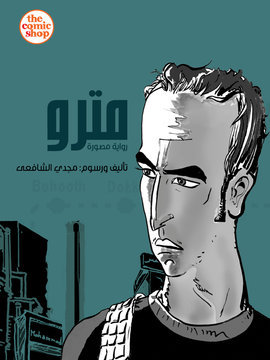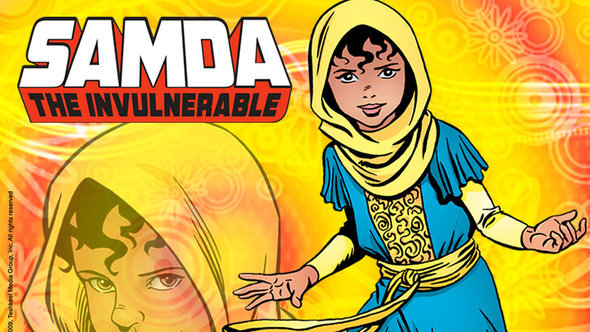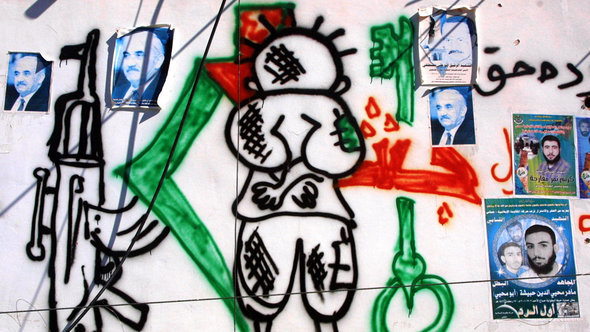From Micky Mouse to Handala
Comics are currently experiencing a revival in Arab countries. Apart from its usual function as reading material for children, the genre's combination of politics and art makes it omnipresent in many nations – with the most recent examples being Egypt and Tunisia. But in dealing with subjects such as religion, politics and morality, caution must be exercised. The extent to which artists must be sensitive to this varies from country to country, and also depends on the mood of the moment.
Last spring, cartoon strips and caricatures were published in Tunisia that publicly mocked Ben Ali. The Tahrir Square protests also found their way onto paper, not least thanks to the comic workshop led by Barbara Yelin at the Goethe Institute in Cairo.
In European countries, little is known about comics from the Arab world. One exception is the Algerian author Slim, whose characters Bouzid and Zina are familiar in France. He portrays life in Algeria with humour and irony, without sparing on social criticism.
A thorn in the side of the censor

Similarly, the graphic novel Metro by Magdy El-Shafee became known beyond Egypt's borders when it was banned, a move that triggered a wave of solidarity. Swiss comic publishers Edition Moderne also released a German-language edition of the work.
In many Arab countries, comics are a widespread and popular art form primarily associated with reading material for children. Comics were often part of the school library's inventory, and parents bought them for their children to encourage them to read.
A variety of children's magazines have been published since the 1950s. The magazine Majid was established in 1979 in Abu Dhabi. It still enjoys a good circulation and is available in all Arab countries. Comics are combined with articles and word puzzles as a way of promoting learning through play. Comic adaptations of classics of world and Arabic literature are equally popular.
The desire for a common Arabic language was very pronounced, and mass media and education played a key role in this regard. As a rule, comics for children are written in Modern High Arabic, but dialects are more frequently finding their way into the speech bubbles.
The history of the new heroes
Translations of comic books from Europe and the US have had a significant impact on the development of the Arab comic. As early as the 1950s, the Adventures of Tintin were being published in children's magazines in Arabic, and the Egyptian children's magazine Miky translated the stories of Mickey Mouse and his friends.
As time went on, Mickey Mouse developed his own Egyptian identity: The famous mouse celebrated religious and national holidays, wore traditional Egyptian clothing and ate typical Arab food. Miky was a familiar figure in all Arabic-speaking countries. Thanks to the Lebanese publishing house Illustrated Publication Superman, Batman and Robin, Tarzan and Lulu also learned to speak Arabic.

Since then, superheroes were a permanent fixture in the Arab world. The hero group The99, by Naif al Mutawa, is inspired by the 99 names of God – including Sami, The Listener, Samda, The Invulnerable and Widad, The Loving.
These young heroes come from all over the world with the mission to conquer evil. Their creator would like to believe that The99 can help to shape a new and more peaceful future.
Comics as a political issue
In newspapers, caricatures and cartoons are often the first response to political events in many Arab nations. The Palestinian Naji al Ali is regarded as one of the most influential artists of the last century and his work serves as a great inspiration to many.
His best-known character is Handala, who always has his back to the reader. Handala is barefoot and wears patched up clothes. He is a small boy from a Palestinian refugee camp. Together with the readers, he observes the experiences of his people, which Naji al Ali has drawn using heavily symbolic images.
Palestinian author Amer Shomali remembers the first time he saw blood as a child was in drawings by Naji al Ali. Black blood, because al Ali only worked in black and white. It was also through these images that Jordanian artist Mike V. Derderian learned that comics can be much more than entertainment.

In 1974, the publishing house Dar al-Fatah al-Arabi was founded by the Palestine Liberation Organisation (PLO) with the intention of publishing books for the purposes of political education. Together with many artists who worked for the publishing house, Mohieddin Ellabad succeeded in publishing progressive books. The artists aimed to create works for the young generation.
Another country where the combination of politics and art had a huge impact on the role of comics is Iraq. The nation was governed by the Socialist Ba'ath Party and engaged in a cultural exchange with the Soviet Union. Many Iraqi students were able to study at Soviet universities and of course brought their experiences back home. Iraqi comic artists were particularly inspired by science fiction: visions of the future, urbanisation and technology are all themes that still find expression in many Iraqi comic books.
The future of the Arab comic
The young readers of yesterday have become the writers and illustrators of today. From Morocco to Syria, the demand for comics for young people and adults is great. Jordanian artist and teacher Natasha Dahdaleh reports that many of her students would very much like to read more comics, but that local production facilities are lacking. This is primarily due to a lack of interest from publishing houses.
Publications such as the Lebanese comic magazine Samandal, founded in 2007, are privately financed and have a circulation of between 1,000 and 2,000. Samandal is the first collectively produced publication for independent comic writers in the Arab world. It is well known in comic artist circles and serves as a source of inspiration for new fanzines. Also, the seventh edition of the Egyptian magazine TokTok has now been published, and promises more exciting work.

Social media play a decisive role in the development of comics in the region. They enable artists to network and remain in a state of constant exchange. Many comics are produced digitally and distributed via Facebook. Amer Shomali always welcomes criticism and suggestions on how he might improve his work. The quality of his comics for the monthly magazine Filistin al-Shabab has improved due to the exchange with colleagues and readers.
Cross-border exchange
Up to now, those who create comics have generally worked alone. Scenario, drawing, colouration – everything is done by one and the same person. Jordanian artist Salam Homoud hopes that in future, teamwork will play an increasingly important role. He is convinced that this will help each individual artist create better-looking, more substantial comics.
Mike V. Derderian initiated a moment of real exchange with the project Palestine: the Graphic Novel. Over the last two years, artists from various disciplines met several times to relate experiences and stories on the subject of Palestine and to transpose them into comic form.
Many of the participants had never drawn comics before. The key driving force behind the project was the commitment to a political theme and the enthusiasm of Mike V. Derderian for graphic literature. The initiative is now waiting for publishing house.
International comic festivals also play an important role. For five years now, Dalila Nadjem has organised the Festival International de la Bande Dessinée d' Alger, an important date in the calendar for creators of comic books in the region. In addition, the Middle East Film & Comic Con has taken place in Dubai for three years.
It is an exciting experience to read and follow the progress of comics from Arab nations. To watch as an entire sector establishes itself. The commitment and skill of the many artists involved – from Morocco to Syria – apparently supply the optimum prerequisites for a bright future.
… and incidentally: The word comic translates into Arabic as "qissa musawwara", or "illustrated story".
Anna Gabai
Anna Gabai is a scholar of Arab studies with a special focus on contemporary literature and comics, and works on a freelance basis for the Museum of European Cultures in Berlin.
© Goethe-Institut / Qantara.de 2013
Editor: Lewis Gropp/Qantara.de
